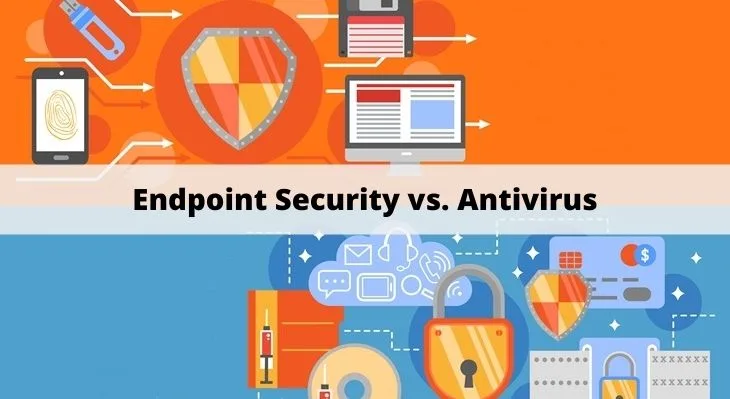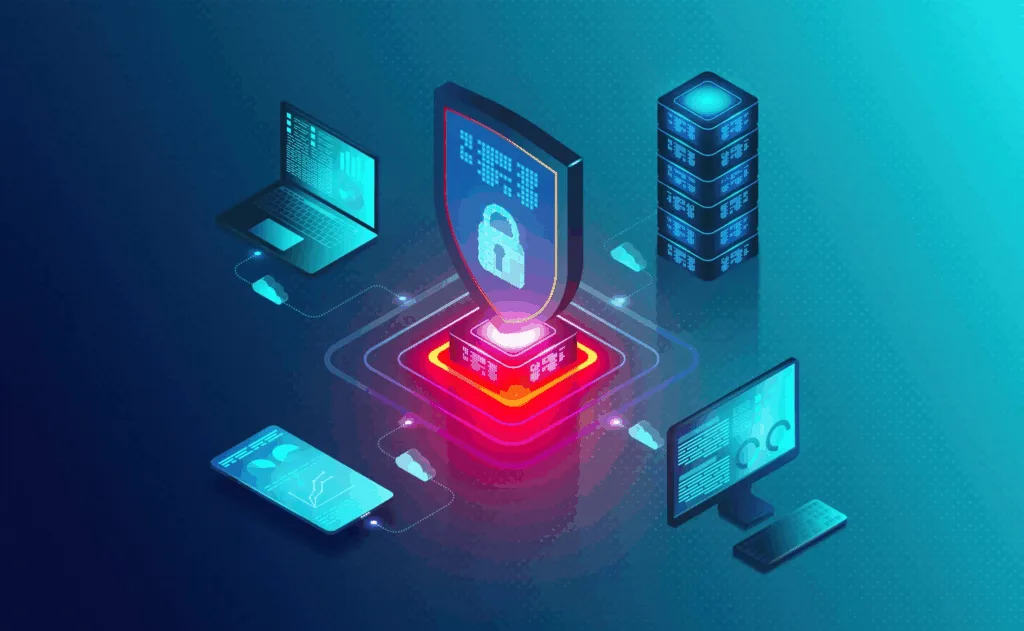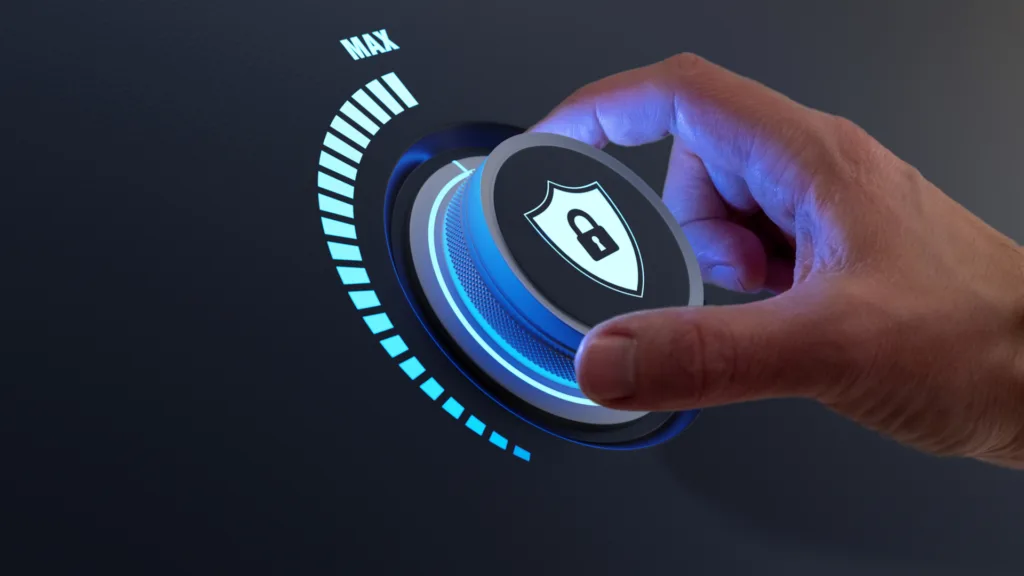
Endpoint security is the process of protecting devices such as workstations, servers, and other connected systems (whether on-premises or in the cloud) from malicious threats and cyberattacks. Unlike traditional antivirus software, endpoint security provides a broader, multi-layered approach that not only detects but also actively prevents, contains, and remediates cyber threats.
Let’s break down the differences between endpoint security vs antivirus with a practical example.
In today’s threat landscape, it’s no longer enough to rely on antivirus software alone. Businesses must adopt endpoint security solutions that combine advanced analytics, behavioral monitoring, and real-time threat detection. These solutions give IT and security teams the visibility they need to identify risks quickly and neutralize attacks before they cause serious damage. Here you go.
Difference Between Endpoint Security vs Antivirus
Containerization is a powerful way to isolate applications and reduce the attack surface. However, containers are not foolproof. Hackers can exploit kernel vulnerabilities, inject malicious apps, or move laterally through unsecured network traffic.
Here’s where endpoint security shines. By adding additional layers of defense—like anti-keylogging tools, behavioral monitoring, and real-time network analysis—endpoint security stops threats that traditional antivirus alone cannot handle.
1. Threat Detection
Antivirus: Relies mostly on signature-based detection, which works well for known malware but struggles with advanced threats like fileless malware or zero-day exploits. It may miss attacks targeting the kernel or lateral movement across containerized systems.
Endpoint Security: Uses behavioral analysis and AI-driven threat detection to identify both known and unknown threats. It continuously monitors processes, flags anomalies, and prevents attacks before they escalate—making it ideal for dynamic environments like containerized infrastructures.
2. Network Traffic Protection
Antivirus: Typically does not monitor inter-container traffic, leaving network communications exposed to lateral movement by attackers. Once a system is breached, threats can spread undetected.
Endpoint Security: Goes beyond device-level protection by actively inspecting and controlling traffic between containers and across networks. Acting as a firewall layer, it blocks unauthorized access and prevents malicious actors from exploiting internal communication paths.
3. Endpoint Security vs Antivirus: Response and Mitigation
Antivirus typically requires manual action after a threat is detected. In fast‑moving containerized environments, this delay can give malware time to spread. Endpoint security handles this automatically by isolating and neutralizing threats in real time. It also sandboxes suspicious files within containers, preventing further damage until a full analysis is complete.
4. Endpoint Security vs Antivirus: Data Loss and Integrity
Antivirus mainly targets malware detection but doesn’t offer strong protection against data loss. This leaves sensitive data vulnerable to theft or leaks. Endpoint security includes data loss prevention (DLP) tools that monitor data movement and encrypt critical information. Even if a container is breached, it ensures sensitive data remains secure.
5. Endpoint Security vs Antivirus: Centralized Management and Reporting
Antivirus works on a device‑by‑device basis, which becomes complicated in containerized setups with multiple running endpoints. Endpoint security provides centralized control with a single dashboard, offering real‑time reporting and a clearer view of the entire network for easier management.
When Should You Choose Between Antivirus vs Endpoint Security?
A major challenge for IT teams and cybersecurity professionals is the lack of control and visibility over endpoints that they don’t manage or own. This creates blind spots in the organization’s security posture. Even if company-owned devices are well protected, unmanaged endpoints can leave gaps, leading to a false sense of safety. These blind spots often allow threats like unauthorized access or malware to go undetected until real damage occurs.
Relying solely on traditional antivirus (AV) in such cases—especially for mid-sized or large businesses—is risky. Here’s why:
1. Inadequate Control Over Updates and Patches
On unmanaged devices, antivirus may not always be updated on time, leaving endpoints exposed to zero-day attacks and advanced persistent threats (APTs). Without central control, organizations can’t enforce policies or confirm proper AV configuration.
2. Inconsistent Security Posture
Different devices often run inconsistent AV setups. Some may use outdated engines that can’t stop modern ransomware like LockBit or Clop. Without centralized management, crucial features such as heuristic analysis or deep packet inspection might be turned off, creating exploitable vulnerabilities.
3. Limited Visibility and Slow Response
Traditional AV on unmanaged endpoints rarely integrates with Security Information and Event Management (SIEM) systems. Without real-time threat intelligence and telemetry, warning signs—like suspicious processes or unusual network activity linked to C2 communications—often go unnoticed. Malware like TrickBot or Cobalt Strike may only be detected after major damage.
When Antivirus May Be Enough
That said, antivirus alone can be suitable for:
- Small businesses on tight budgets where AV provides baseline protection from common threats (e.g., adware like Fireball, ransomware like WannaCry).
- Organizations with few endpoints, where managing AV is simpler and covers basic threats (e.g., Dridex trojans, phishing attempts).
- Companies handling non-critical data, such as small retailers, where risks are lower.
- Closed or isolated networks, such as SCADA-based manufacturing units or air-gapped local government offices, where the reduced attack surface lowers the risk. (Though it’s important to note that air gaps are not foolproof.)
Conclusion
Traditional antivirus solutions were built for a time when cyber threats were simpler and networks were easier to contain. Their reliance on signature-based detection makes them effective only against known malware, leaving them powerless against modern fileless attacks, zero-day exploits (ZTEs), and advanced persistent threats (APTs).
Because of this, legacy AVs only scratch the surface, allowing sophisticated attackers to bypass defenses and compromise endpoints.
Endpoint security takes a far more advanced approach. It goes beyond basic detection with:
- Real-time behavioral analysis to spot and stop threats before damage occurs.
- Automated response mechanisms to quickly contain attacks and prevent lateral movement across networks.
- Forensic insights that reveal the root cause, scope, and impact of breaches for faster remediation.
These capabilities close the gaps left by traditional AVs, delivering a proactive, adaptive, and future-ready security posture.
In today’s fast-moving digital environment, relying on outdated defenses is too risky. A modern endpoint security platform like SentinelOne equips your business with comprehensive protection and the resilience needed to stay ahead of attackers.
Protect your organization today—because when it comes to cybersecurity, waiting is not an option.


